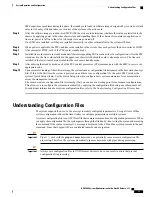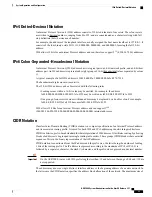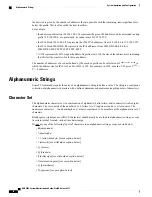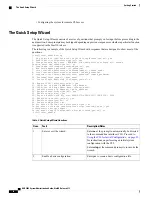
There are several types of logical interfaces to configure to support Simple and Mobile IP data applications.
These are briefly defined below.
Management Interface
This interface provides the point of attachment to the management network. The interface supports remote
access to the command line interface (CLI). It also supports Common Object Request Broker Architecture
(CORBA)-based management via the Web Element Manager application, and event notification via the Simple
Network Management Protocol (SNMP).
Define management interfaces in the
local
context and bind them to the ports on the Switch Processor
Input/Output (SPIO) cards.
Bindings
A binding is an association between elements within the system. There are two types of bindings: static and
dynamic.
Static binding
is accomplished through system configuration. Static bindings associate:
•
A specific logical interface (configured within a particular context) to a physical port. Once the interface
is bound, traffic can flow through the context as if it were any physically-defined circuit. Static bindings
support any encapsulation method over any interface and port type.
•
A service to an IP address assigned to a logical interface within the same context. This allows the interface
to take on the characteristics (that is, support the protocols) required by the service.
Dynamic binding
associates a subscriber to a specific egress context based on the configuration of their profile
or system parameters. This provides a higher degree of deployment flexibility, as it allows a wireless carrier
to support multiple services and facilitates seamless connections to multiple networks.
Management ports can only be bound in the local context. Traffic or subsciber ports can only be bound in a
non-local context.
Services
Configure services within a context to enable certain functionality. The following are examples of services
you can configure on the system, subject to licensing availability and platform type:
•
Gateway GPRS Support Node (GGSN) services
•
Serving GPRS Support Node (SGSN) Services
•
Packet Data Serving Node (PDSN) services
•
Foreign Agent (FA) services
•
Home Agent (HA) services
•
Layer 2 Tunneling Protocol Access Concentrator (LAC) services
•
Dynamic Host Control Protocol (DHCP) services
•
Packet Data Interworking Function (PDIF) services
•
Mobility Management Entity (MME) Services
ASR 5000 System Administration Guide, StarOS Release 21.1
4
System Operation and Configuration
Logical Interfaces
Summary of Contents for ASR 5000
Page 26: ...ASR 5000 System Administration Guide StarOS Release 21 1 xxvi Contents ...
Page 316: ...ASR 5000 System Administration Guide StarOS Release 21 1 288 VLANs VLAN Related CLI Commands ...
Page 400: ...ASR 5000 System Administration Guide StarOS Release 21 1 372 Engineering Rules ECMP Groups ...




































